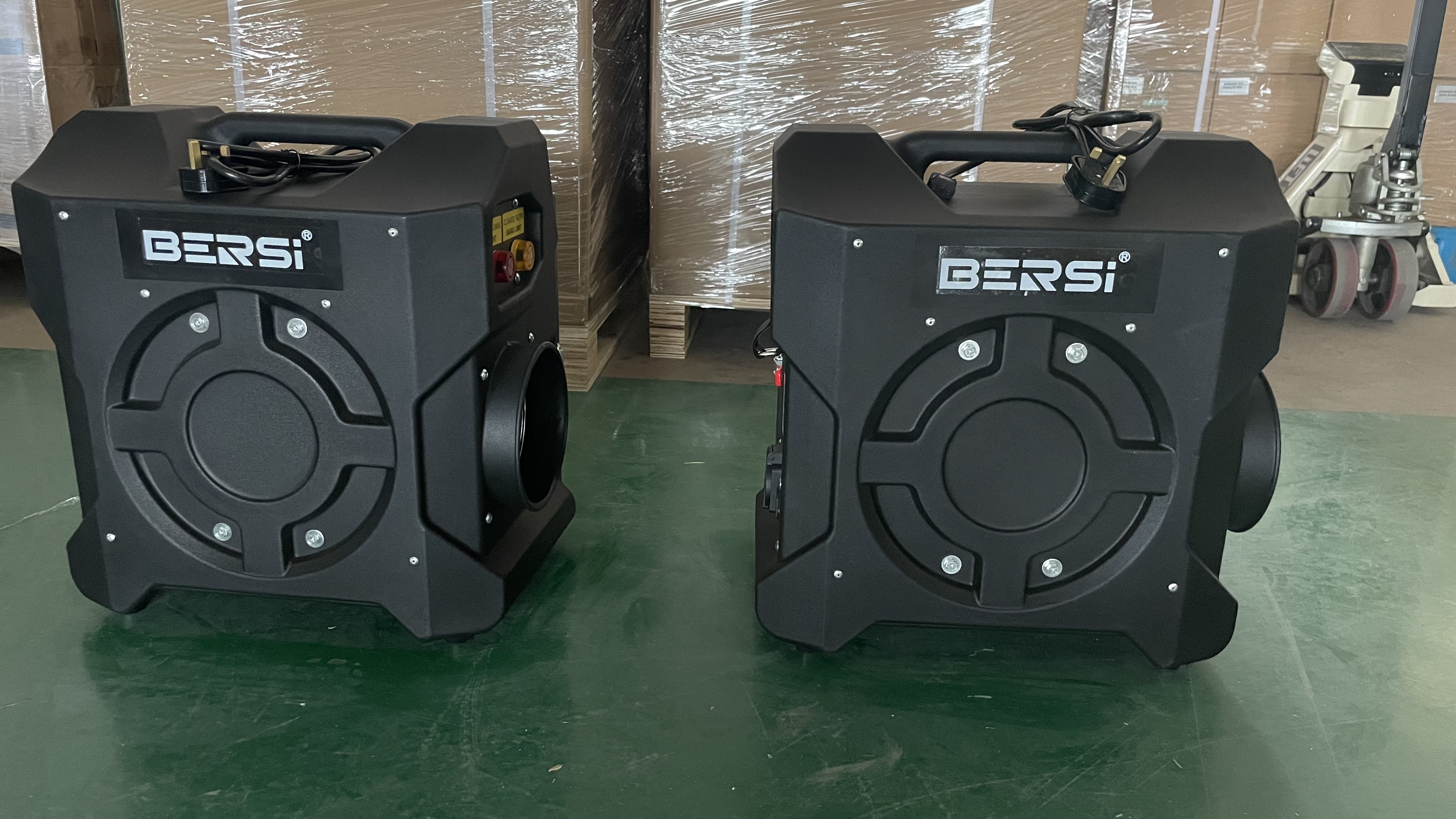Construction sites are dynamic environments where various activities generate significant amounts of dust, particulate matter, and other pollutants. These pollutants pose health risks to workers and nearby residents, making air quality management a crucial aspect of construction project planning. Industrial air scrubbers play a vital role in controlling air pollution on construction sites, ensuring a safer and healthier environment.
The Development of Industrial Air Scrubbers
The concept of air scrubbing dates back to the early 20th century when the first rudimentary systems were designed to reduce dust and smoke in industrial facilities. These early systems were simple, using water sprays to capture large particulates.
With advancements in technology, the 1950s and 1960s saw the introduction of more sophisticated scrubbers, including the development of wet and dry scrubbers. Wet scrubbers use liquid to wash pollutants from the air, while dry scrubbers use a dry reagent or slurry to neutralize pollutants. These methods significantly improved the efficiency of pollutant removal, addressing a broader range of contaminants, including gases and vapors.
In recent decades, technological innovations have led to the development of hybrid scrubbers and more efficient filtration systems. These modern scrubbers combine various technologies, such as UV light, activated carbon, and advanced filtration materials, to tackle even the most challenging industrial pollutants.
How Air Scrubbers Are Used on Construction Sites
ü Dust Control: Air scrubbers are deployed to control dust generated by various construction activities. They draw in polluted air, filter out dust particles, and release clean air back into the environment. This process helps maintain visibility and reduce respiratory hazards for workers.
ü VOC Removal: During painting or the use of adhesives and solvents, air scrubbers equipped with activated carbon filters capture VOCs, preventing harmful exposure to workers and reducing odor nuisances.
ü Silica Dust Mitigation: Air scrubbers are particularly effective in mitigating silica dust, a known cause of silicosis. By capturing fine silica particles, they help comply with occupational safety regulations and protect workers’ health.
ü Asbestos Abatement: In demolition or renovation projects involving asbestos, air scrubbers are crucial for containing and removing asbestos fibers, ensuring safe air quality and adherence to stringent regulatory standards.
Benefits of Using Air Scrubbers on Construction Sites
Health Protection: By removing hazardous airborne contaminants, air scrubbers protect the health of construction workers, reducing the risk of respiratory illnesses and other health issues.
Regulatory Compliance: Using air scrubbers helps construction companies comply with local, state, and federal air quality regulations, avoiding potential fines and legal issues.
Improved Productivity: Cleaner air leads to a safer and more comfortable working environment, which can enhance worker productivity and reduce downtime caused by health-related absences.
Environmental Impact: Effective air pollution control minimizes the environmental impact of construction activities, contributing to broader sustainability goals and community well-being.
Choosing the Right Air Scrubber for Construction Sites
Selecting the appropriate air scrubber for a construction site involves considering several factors:
l Pollutant Type and Concentration: Identify the primary pollutants generated by the construction activities and choose an air scrubber with the right filtration technology to address them. HEPA filters are ideal for fine particulates, while activated carbon filters are effective for VOCs.
l Airflow Capacity: Ensure the scrubber can handle the volume of air in the construction area. The unit’s Clean Air Delivery Rate (CADR) should match the size of the site and the intensity of pollutant generation.
l Durability and Mobility: Construction sites require robust and mobile air scrubbers that can withstand harsh conditions and be easily moved as needed.
l Maintenance and Operation Costs: Consider the cost of filter replacements, energy consumption, and routine maintenance to ensure the scrubber is cost-effective over the project’s duration.
In future, we believe that innovations in filter materials and designs will enhance the efficiency and lifespan of air scrubbers, making them more effective at capturing a wider range of pollutants.Portable and modular air scrubbers will provide greater flexibility, allowing for easy deployment and customization to meet varying site conditions.
For more insights and updates on air quality management in construction, stay tuned to our blog.
Post time: May-21-2024

